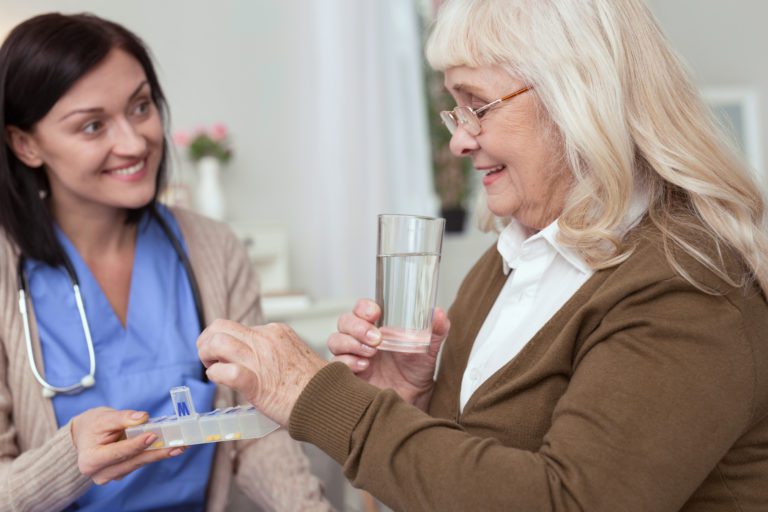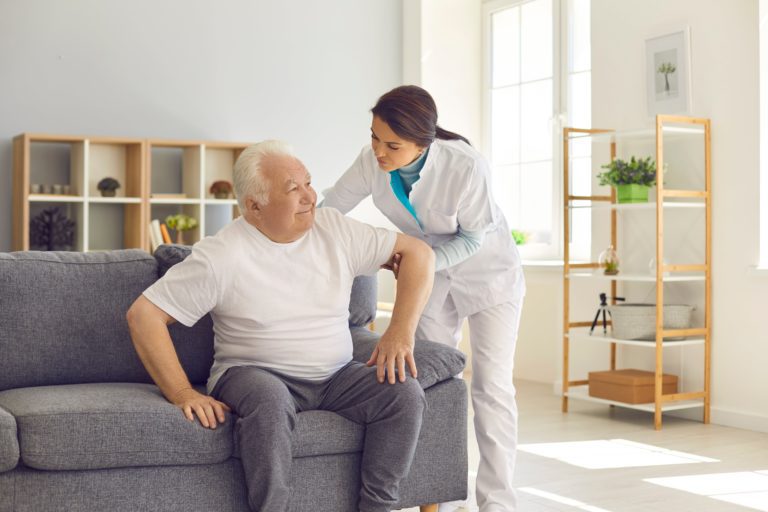As we age, it’s natural for our bodies to undergo changes that may limit our mobility, strength, and overall health. However, one of the most effective ways to combat these changes is through regular exercise. Exercise is not just about staying fit—it’s about enhancing the quality of life, promoting independence, and improving mental well-being. At From The Heart Home Care, we believe that incorporating movement into daily life is key to healthy aging and overall vitality.
In this article, we’ll discuss the significant benefits of regular exercise for seniors, offer guidance on safe and effective activities, and explain how caregivers can support seniors in staying active.
Why Regular Exercise is Crucial for Seniors
The benefits of exercise extend far beyond physical fitness. For seniors, consistent movement can lead to better health outcomes, a longer life, and enhanced emotional well-being. Here’s why exercise should be a cornerstone of any senior’s daily routine:
1. Reduces the Risk of Falls and Improves Balance
One of the most common concerns for older adults is the risk of falling. Falls can result in serious injuries, like fractures or sprains, which may limit mobility even further. However, balance-focused exercises, such as tai chi, yoga, or even simple standing exercises, help improve coordination and reduce fall risk. When seniors maintain good balance, they feel more confident and independent in their daily activities.
2. Boosts Cardiovascular Health and Energy Levels
Engaging in aerobic exercises, such as walking, swimming, or cycling, helps improve heart health, lowers blood pressure, and boosts overall energy. Regular cardiovascular activity strengthens the heart and lungs, reducing the risk of heart disease, stroke, and other chronic conditions. For seniors, even light-to-moderate exercise can significantly enhance stamina and combat feelings of fatigue.
3. Increases Strength and Flexibility
As we age, our muscles and joints naturally lose some of their flexibility and strength. Regular resistance training (such as using light weights or resistance bands) helps maintain muscle mass, which is essential for performing everyday tasks like lifting groceries or getting in and out of a car. Stretching exercises, such as gentle yoga, also improve flexibility and range of motion, making movement easier and reducing the likelihood of stiffness and discomfort.
4. Supports Cognitive Function and Mental Clarity
The brain benefits greatly from physical activity. Studies show that exercise increases blood flow to the brain, which supports cognitive functions like memory and problem-solving. For seniors, this means improved mental clarity and a reduced risk of cognitive decline, including conditions like dementia and Alzheimer’s. Moreover, physical activity releases endorphins, which improve mood and alleviate symptoms of anxiety and depression.
5. Improves Sleep and Reduces Stress
Exercise not only improves physical health but also contributes to better sleep and a more relaxed state of mind. Seniors who exercise regularly often report falling asleep faster, experiencing deeper sleep, and waking up feeling refreshed. Additionally, the stress-relieving effects of exercise help manage feelings of anxiety or depression, promoting emotional well-being and a sense of calm.
Safe and Effective Exercise Options for Seniors
It’s essential for seniors to engage in physical activities that are both safe and suited to their fitness level. Not every exercise is appropriate for every senior, especially those with mobility issues or chronic conditions. Here are some of the best types of exercise for seniors:
Walking: The Ultimate Low-Impact Exercise
Walking is one of the simplest and most accessible forms of exercise, offering tremendous benefits with minimal risk. It improves cardiovascular health, aids in weight management, and enhances mood—all while being easy on the joints.
Chair Exercises: Fitness for Limited Mobility
For seniors who have difficulty standing or moving around, chair exercises are a great option. These exercises can be done while sitting in a sturdy chair and can include leg lifts, arm movements, and even gentle stretches. Chair-based exercises allow seniors to stay active without straining their bodies.
Water Aerobics: Gentle on the Joints
Water-based exercises, such as swimming or water aerobics, are ideal for seniors with arthritis or joint pain. The buoyancy of the water reduces the impact on joints while providing resistance to help strengthen muscles.
Yoga and Stretching: Flexibility and Relaxation
Gentle yoga, tai chi, or stretching routines are perfect for improving flexibility, balance, and relaxation. Many yoga classes are designed specifically for seniors, focusing on movements that can be performed safely and effectively. Yoga also promotes mindfulness and mental clarity.
Strength Training: Building Muscle Mass
Incorporating light strength training, using weights or resistance bands, can help seniors maintain muscle mass, bone density, and metabolic function. Stronger muscles make everyday activities like carrying groceries, getting up from a chair, or even walking up stairs much easier and less tiring.
Learn More: Cancer Care at Home for Seniors: A Compassionate Choice
How Caregivers Can Support Senior Exercise Routines
At From The Heart Home Care, we believe caregivers play an essential role in supporting seniors’ exercise routines. Encouraging movement and providing the right environment for exercise can make a world of difference in a senior’s life. Here are some ways caregivers can help:
Create a Safe Exercise Environment
Before beginning any physical activity, ensure that the environment is safe. This might involve removing tripping hazards, providing sturdy chairs for seated exercises, or ensuring that there’s sufficient lighting in the area. A safe, comfortable environment is key to promoting consistent exercise.
Develop a Personalized Exercise Plan
No two seniors are the same, and neither should their exercise plans be. A caregiver can work with the senior to create a personalized exercise plan that meets their specific needs, health conditions, and preferences. This might include low-impact activities for seniors with arthritis or joint pain, or strength training for those seeking to improve muscle mass.
Provide Encouragement and Motivation
Staying motivated can be challenging for some seniors. Caregivers can offer support by exercising with the senior, providing praise and encouragement, and celebrating milestones along the way. Whether it’s a short walk or an extra set of stretches, the small victories are worth acknowledging.
Monitor Progress and Adjust Exercises as Needed
As the senior’s strength, flexibility, and endurance improve, the caregiver can gradually adjust the intensity of exercises to keep them challenging. It’s important to listen to the senior’s body and make modifications to avoid overexertion.
Learn More: The Role of In-Home Caregivers in Managing Type 2 Diabetes in Greenville
Conclusion:
Regular exercise is one of the most impactful ways seniors can maintain their independence, improve their health, and enhance their quality of life. Whether it’s walking, strength training, yoga, or even water aerobics, movement is a powerful tool for seniors of all fitness levels.At From The Heart Home Care, we are committed to supporting seniors in living their best lives. By encouraging regular physical activity, we empower seniors to stay active, independent, and connected to the world around them.







